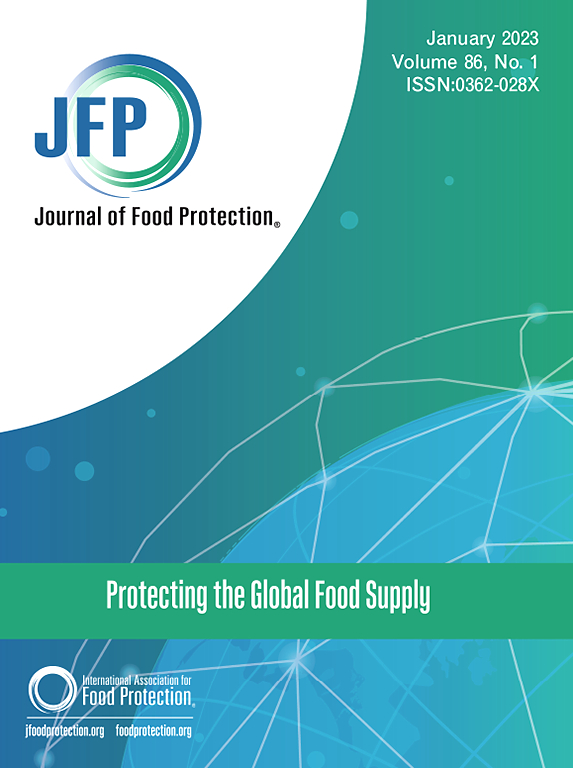Hygienic Evaluation of Wooden Cutting Boards: Microbiological Parameters
IF 2.8
4区 农林科学
Q3 BIOTECHNOLOGY & APPLIED MICROBIOLOGY
引用次数: 0
Abstract
The suitability of wood as a traditional material for crafting cutting boards for food preparation has long been a topic of debate. Central to this discussion are concerns about the hygienic properties of wood, primarily due to its porous structure and hygroscopic nature. These characteristics raise concerns about the potential retention of microorganisms within the wood, making them inaccessible to standard cleaning and disinfection methods. Consequently, there is a risk of these bacteria being released back to the wood surface, posing a threat of food recontamination.
However, there is research that has shed new light on this issue by suggesting that wood can possess bactericidal properties leading to reduced microbiological loads compared to plastic cutting boards.
Therefore, this study aimed to explore the behavior of various microorganisms on professional cutting boards made from sugar maple wood compared to those made from high-density polyethylene (HDPE). The cutting boards were inoculated with 4.7 log10 cfu/cm2. In the trials, maple cutting boards exhibited a significant reduction in E. coli detection rates to the detection limit of 1.7 log10 cfu/cm2 after just two hours, even without cleaning. While S. aureus showed delayed reduction on the cutting board surfaces, HDPE boards presented overall higher detection rates compared to those made of sugar maple wood.
Based on these findings, a reevaluation of wood’s hygiene status in the food sector is required.
木质砧板卫生评价:微生物参数。
长期以来,木材作为一种传统材料制作砧板的适用性一直是一个有争议的话题。讨论的核心是木材的卫生特性,主要是由于其多孔结构和吸湿性。这些特点引起了人们对木材中可能保留微生物的担忧,使它们无法使用标准的清洁和消毒方法。因此,这些细菌有被释放回木材表面的风险,构成食品再污染的威胁。然而,有一项研究表明,与塑料砧板相比,木材可以具有杀菌特性,从而减少微生物负荷,从而为这个问题提供了新的思路。因此,本研究旨在探讨糖枫木和高密度聚乙烯(HDPE)制作的专业砧板上各种微生物的行为。砧板接种剂量为4.7 log10 cfu/ cm2。在试验中,枫木砧板在两小时后,即使不清洗,大肠杆菌的检出率也显著降低到1.7 log10 cfu/ cm2。虽然金黄色葡萄球菌在砧板表面显示延迟减少,但HDPE板的总体检出率高于糖枫木板。根据这些发现,需要重新评估木材在食品部门的卫生状况。
本文章由计算机程序翻译,如有差异,请以英文原文为准。
求助全文
约1分钟内获得全文
求助全文
来源期刊

Journal of food protection
工程技术-生物工程与应用微生物
CiteScore
4.20
自引率
5.00%
发文量
296
审稿时长
2.5 months
期刊介绍:
The Journal of Food Protection® (JFP) is an international, monthly scientific journal in the English language published by the International Association for Food Protection (IAFP). JFP publishes research and review articles on all aspects of food protection and safety. Major emphases of JFP are placed on studies dealing with:
Tracking, detecting (including traditional, molecular, and real-time), inactivating, and controlling food-related hazards, including microorganisms (including antibiotic resistance), microbial (mycotoxins, seafood toxins) and non-microbial toxins (heavy metals, pesticides, veterinary drug residues, migrants from food packaging, and processing contaminants), allergens and pests (insects, rodents) in human food, pet food and animal feed throughout the food chain;
Microbiological food quality and traditional/novel methods to assay microbiological food quality;
Prevention of food-related hazards and food spoilage through food preservatives and thermal/non-thermal processes, including process validation;
Food fermentations and food-related probiotics;
Safe food handling practices during pre-harvest, harvest, post-harvest, distribution and consumption, including food safety education for retailers, foodservice, and consumers;
Risk assessments for food-related hazards;
Economic impact of food-related hazards, foodborne illness, food loss, food spoilage, and adulterated foods;
Food fraud, food authentication, food defense, and foodborne disease outbreak investigations.
 求助内容:
求助内容: 应助结果提醒方式:
应助结果提醒方式:


